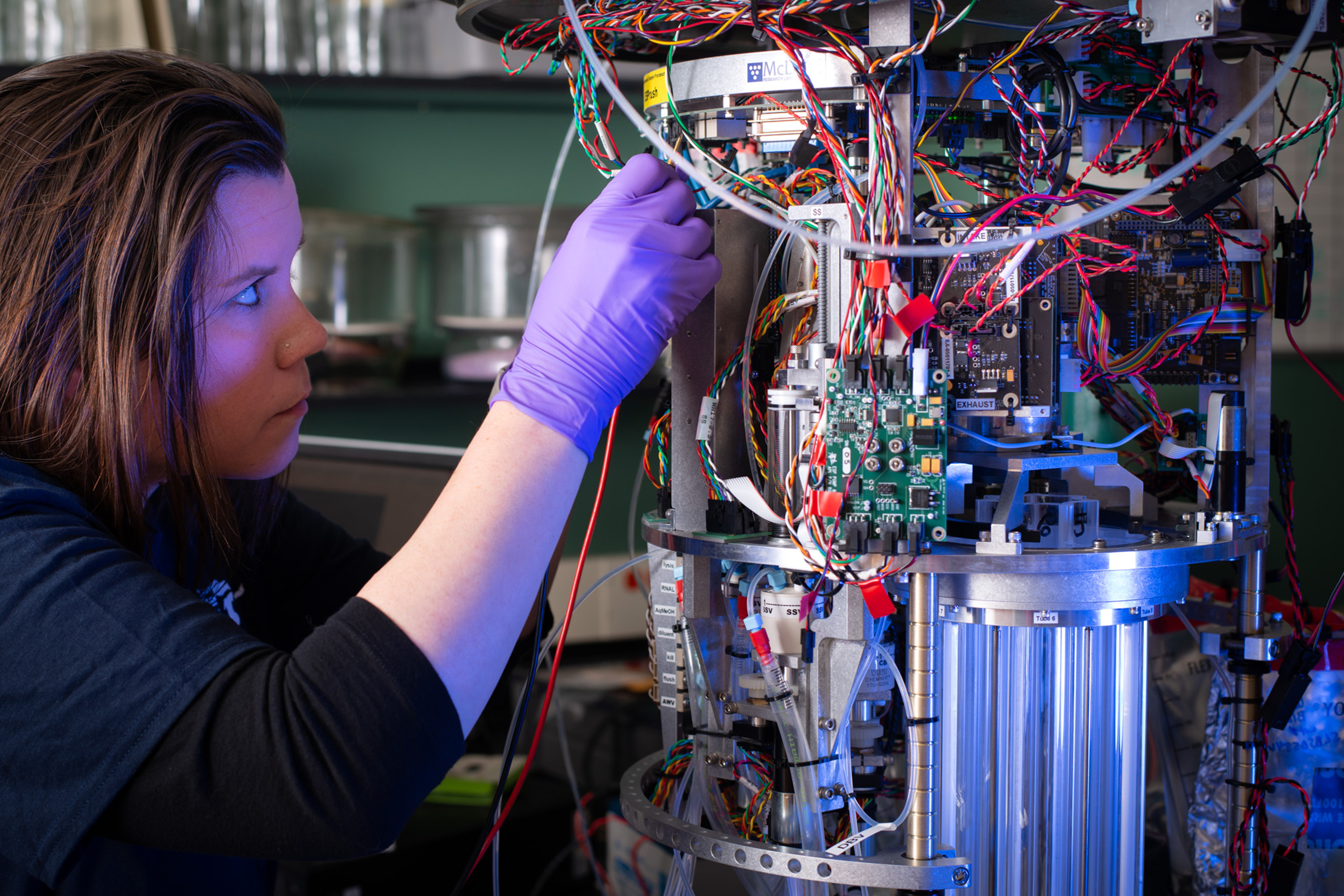Environmental Sample Processor (ESP)

|
What is an ESP?
In 2017, the world’s first-ever freshwater Environmental Sample Processor (ESP) began tracking the levels of dangerous toxins produced by cyanobacteria that bloom each summer in the western basin of Lake Erie. An ESP is a "lab in a can" designed for autonomous deployment, meaning it can function on its own without human help once deployed. It collects water samples, concentrates particulate material, runs molecular diagnostics that are customized to the needs of the users, and sends data in near real-time. In the Great Lakes, the purpose of ESP work is to monitor the water for microcystin, the dominant algal toxin in western Lake Erie. This allows NOAA GLERL to provide drinking water managers with data on harmful-algal toxicity in near real-time, before the water reaches municipal water intakes. This toxicity data produced by ESPs, coupled with the NOAA Lake Erie HAB Forecast provide water managers with more precise bloom location, projected direction, intensity, and toxicity. Since ESPniagara’s initial 2017 deployment, NOAA GLERL has added two more members to its ESP fleet: ESPnessie and ESPrush.

|
Advantages over other monitoring methods
NOAA GLERL’s ESPs, in conjunction with the NOAA Lake Erie HAB Forecast, strengthen NOAA's ability to detect microcystins and forecast bloom movement, providing important information to local managers assessing potential human health impacts. Without them, water treatment managers rely on weekly water quality sampling proxies, such using algal pigment concentrations to infer risk of toxins and/or sampling and analysis of water once it has reached the treatment plants. These other methods provide water treatment managers little time to respond to a toxic bloom. ESPs can provide managers an earlier warning of algal blooms and their toxicity, which enable communities to take action to protect public health sooner. Tests are done every other day starting in July and then increased to once a day starting in August, to coincide with the expected peak in bloom toxicity. Test results are automatically emailed to the inboxes of researchers This near real-time information augments weekly monitoring in Lake Erie, which requires field water quality samples to be analyzed in the laboratory for algal toxin. Correlations between weekly field data collected on toxicity and chlorophyll concentrations are continuously monitored in an effort to develop an experimental forecast of bloom toxicity.
Development and Funding
The ESPniagara, aptly named for its use in a Great Lakes system, is a "lab in a can" designed in collaboration with NOAA National Centers for Coastal Ocean Science (NCCOS), the Cooperative Institute for Great Lakes Research (CIGLR), and Monterey Bay Aquarium Research Institute (MBARI). The ESP was developed by MBARI and is now commercially manufactured by McLane Laboratories. NOAA GLERL purchased its ESPs with funding from the EPA-Great Lakes Restoration Initiative. The technology to detect microcystins (an ELISA assay) was developed by NOAA-National Centers for Coastal Ocean Science (NCCOS). Previous work to demonstrate the viability of ESP technology to assist in monitoring and forecasting of HABs and their related toxins in the marine environment has been supported by NOAA-National Centers for Coastal Ocean Science (NCCOS) funding. Ultimately, toxicity data from the three autonomous labs will be incorporated into short-term algal bloom forecasts for the western Lake Erie basin.
View ESP Data
Click here to view ESP data from the current season.
| General Inquires info-services.glerl@noaa.gov 734-741-2235 |
Data Requests oar.glerl.data@noaa.gov |


